INDEPENDENT & UNBIASED
MyGolfSpy accepts $0 advertising dollars from any of the major golf manufacturers. We believe in always putting #ConsumerFirst.
180
Hours
Researched
14
Products
Considered
8,337
Shots
Hit
40.1m
Readers
OUR JOB IS YOUR GAME
The golf equipment manufacturers continue to push the limits of technology (and the USGA equipment rules for that matter), promising more distance, greater forgiveness, and sometimes even lower scores. For that to be true, the tools they provide must allow us to hit the ball higher, longer, and straighter.
In the past, few have delivered the total package in a single set of irons. If you needed forgiveness and a bit more distance, you went game improvement. If you wanted precision and workability, you went with players cavitybacks. Some of you still choose blades.
Within the last few years, however, a new trend in golf equipment has taken hold – the players distance iron. With each manufacturer touting some flavor of revolutionary technology, we’re still being promised a few more yards and greater forgiveness, but now we can get it in a smaller package with a bit more workability.
This year we put 14 of the top Players Distance irons to the test. If you’re in the market for new irons in 2019, this test is for you.
Most Wanted: Mizuno JPX 919 Forged





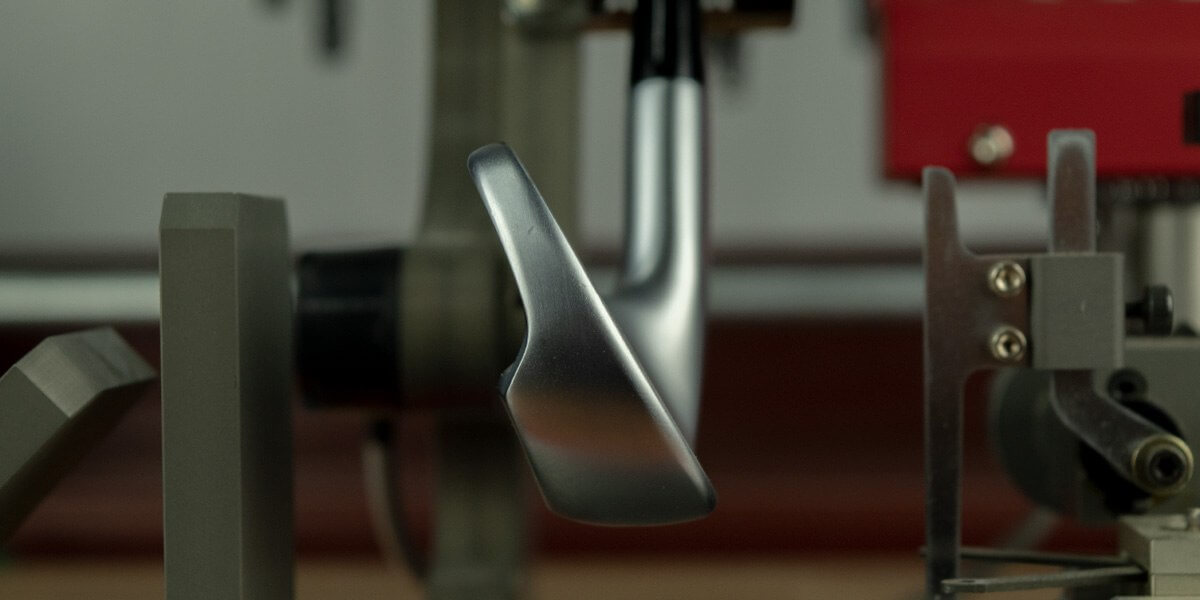
Performance Grades
Below is a breakdown of performance grades by iron length. The percentages displayed for each iron represent the frequency at which each was among the best performing irons for each tester across the test pool. For more information about how we arrive at these results, see our How We Test page.
Iron Buying Considerations
Performance should be your primary concern when buying new irons, but there are some additional things you may want to think about before you make your purchasing decision.
SET MAKE-UP
You’ll likely hit iron shots on the majority of holes you play, so it’s essential to pay attention to set make-up. As with most things in the golf equipment industry, there is no universal standard for set composition. That’s not a bad thing as it allows for almost endless combinations and the ability to mix and match between models when appropriate. In the Players Distance category, 4-irons are practically ubiquitous, but not every set offers a gap wedge. It’s important is that you make sure your iron set can fill every spot in the bag you need it to fill, and that you’re not forced to buy more clubs than you want or need.
SHAFT SELECTION
The number of shaft options offered for irons is growing. It can be challenging to navigate the different models, weights, and flexes to find the shaft that’s right for you. The answer to the best performing shaft question stretches well beyond graphite vs. steel.
We always recommend taking the time to go through a professional fitting, but if you don’t have the resources, the Mizuno Shaft Optimizer isn’t a bad place to start. This advanced technology utilizes gyroscopes and strain gauges to measure things like club speed, tempo, and how much the shaft is flexing at impact. It then recommends a list of shafts for your swing. It even makes a lie angle recommendation.
DISTANCE VS. FORGIVENESS VS. WORKABILITY
In a perfect world, we would get all three in one iron that everyone could play. Unfortunately, distance, forgiveness, and workability are like gauges – when you add to one, you take from another. Evaluate your game and decide what you need to maximize performance. If you’re looking to maximize distance, the Honma TW747P and the PING i500 are excellent options. It’s important to note that loft and distance are correlated, and in most cases, more distance comes with stronger lofts and diminished ability to hold greens. If you’re looking for forgiveness – the TaylorMade P790 impressed us with its consistency across several key metrics. Other top picks for forgiveness are the Mizuno JPX919 Forged and the PXG 0311P GEN2.
COST
A set of irons is likely going to be the most expensive investment for your golf bag. In the Players Distance category, the majority of irons tested will set you back more than $1000. While the top performing irons in our test are in that range, the Sub70 699 is a bargain. Notwithstanding any exotic shaft upgrades, you’re looking at $450 for a 7-club set.

PRODUCT SPOTLIGHT - WILSON C300 FORGED
Delivering outstanding performance in both the long and short irons, the Wilson Staff C300 Forged Irons are not to be overlooked in your next iron fitting. Wilson designed the C300 with a technology it calls Power Holes. As with other signature technology in the category, the holes are designed to increase the flexing of the clubface at impact. While the C300 Forged didn't produce the longest distances in our test, they were shown to be both accurate and forgiving.
If you're looking for precision and forgiveness with more of a player-preferred look, the Wilson's C300 Forged should be in your consideration set.
FIELD NOTES
During each test, we look for trends that provide us insight into where the market as a whole is moving, as well as what noteworthy changes manufacturers have made to improve year-over-year performance. We also solicit feedback from our testers. We want to understand what they liked, what they didn’t like, and why. We want to reemphasize that, while we do collect and share noteworthy portions of this feedback, it does not factor in our rankings.
Trends and Tweaks
- The overarching theme of Players Distance Irons is that they feature some technology in the head to help boost ball speeds while retaining something akin to a player preferred profile. Many leverage hollow-body construction. Others leverage multi-material construction to pull weight from where it isn’t needed and add it where it is. The Players Distance category isn’t for those looking for the buttery feel of single piece forgings.
- A continuing trend from last year’s 2018 Most Wanted Players Distance Iron Test is the use of hollow-body (PING i500, Miura IC-601) or filled-body (PXG 0311 GEN2 and TaylorMade P790) construction. These designs include some variety of thinner face designed to increase face flexure and generate more ball speed.
- The majority of Players Distance irons offer some form of multi-material construction. In addition to steel, Tungsten is common. PXG (COR2) and TaylorMade (SpeedFoam) use polymers and other proprietary materials to reinforce the face, allowing for thinner designs.
- While there’s as much or more technology packed into Players Distance irons as there is in the Game Improvement category, one of the distinguishing features of the category is is often a more compact, player preferred profile. Shorter blade lengths and thinner soles in irons like the Callaway Apex are easier on the eyes, and allow the golfer to maintain some degree of workability with more forgiveness than you find in a Players Cavityback.
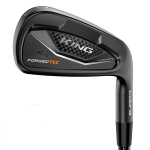
PRODUCT SPOTLIGHT - Cobra KING Forged Tec Black
A strong performer across the board, the Cobra KING Forged Tec produced superior accuracy and forgiveness in the long irons. Cobra's latest Players Distance offering utilizes a super thin Forged 4140 Chromolly Steel Face designed to increase ball speeds on off center hits. Narrow standard deviations of ball speed and carry suggest that the technology does exactly what it's designed to do. One of the added bonuses with the Forged Tec Black (and all other Cobra clubs) is that Arccos shot tracking is built-in.
Make sure to include the Cobra KING Forged Tec Black on your list when getting fitted.
Notes from the Testing Pool
The following section details subjective feedback from our pool of 20 testers. While it is meant to highlight some of the feedback obtained during the test, it’s important to note that none of it is directly related to the actual performance of the club, and as such, does not factor in the overall rankings.
- Among the top rated irons for feel in this year’s players distance iron test were the Mizuno JPX 919 Forged; and a surprising newcomer, the Sub70 699. The 919s feature a fully forged 1025 carbon steel head and a CNC milled face to offer the feel you’d expect from a Mizuno iron. The Sub70 699 is a direct-to-consumer iron with a design that’s not entirely dissimilar from the PING’s i500. Other notables receiving high scores for feel were the PXG 0311P and Titleist AP3.
- Slower swing speed testers tended to favor clubs that helped the ball get up in the air. The Wilson Staff C300 Forged Irons, and our Most Wanted Winner – the Mizuno JPX 919 Forged – were among the top-rated by slower swing speed golfers.
- The Titleist AP3 was the highest rated club in all three subjective categories; looks, feel, and alignment. Faster swinging and lower handicap golfers in the test group cited this iron’s player preferred compact profile and thin top line.
- On the opposite end, testers commented that the sound of the Miura IC-601 was unpleasant at impact. It’s profile, most notably, the offset wasn’t a favorite of the testing pool. Despite the feedback, the Miura IC-601 finished in the top-10 overall.
2019 Most Wanted Players Distance Irons Data
To filter and compare by club, use the drop-down list and checkboxes to select the only the irons you wish to compare.
It is important to note that while comparing the performance averages of 20 golfers with varying swing speeds and characteristics is interesting and sometimes useful, it doesn’t tell the complete performance story. For this reason, we look at performance on a per-golfer basis. The overall rankings (list near the top of this story) reflected the rate at which a club finished in the Top Performing Group for each tester.
EXPERT TIP - SHAFT MATERIAL
Although steel shafts dominate the testing pool, graphite shafts are becoming more suitable for higher swing speed players. The perception is steel shafts are for stronger, faster swinging players. Whereas, graphite shafts are not. Be open minded towards the shaft material in your next set of irons. The appropriate shaft material can lead to tighter dispersion and tighter launch conditions, and graphite shafts might just be the ticket to those attributes.
PRODUCT SPECIFICATIONS
2019 Most Wanted Players Distance Iron Specs
| Club | PW Loft | PW Length | 7 Iron Loft | 7 Iron Length | 5 Iron Loft | 5 Iron Length | |
|---|---|---|---|---|---|---|---|
 | Callaway Apex Check Price | 43° | 35.375" | 30.25° | 36.75" | 23° | 37.75" |
 | Callaway Rogue Pro Check Price | 44.25° | 35.5" | 30.75° | 36.875" | 23.5° | 37.875" |
 | Cobra KING Forged Tec Black Check Price | 44.75° | 35.75" | 30.5° | 37" | 22.5° | 38" |
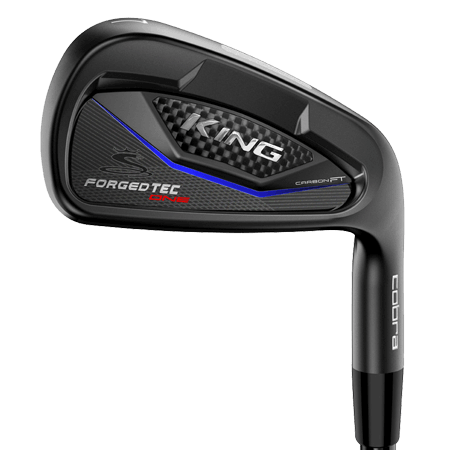 | Cobra KING Forged Tec ONE Check Price | 45° | 37" | 29.75° | 37" | 23.5° | 37" |
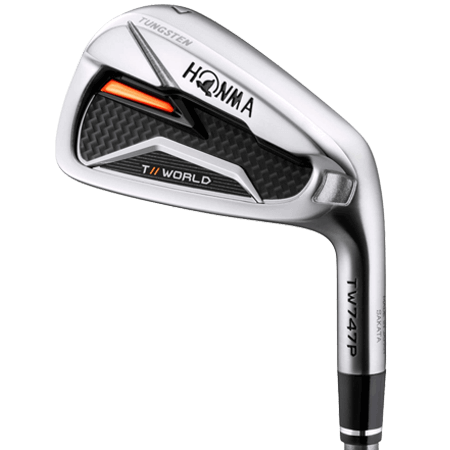 | Honma TW747P Check Price | 44° | 35.625" | 28.5° | 37.25" | 21.25° | 38.25" |
 | Miura IC-601 Check Price | 44.5° | 35.625" | 30.25° | 36.75" | 25.25° | 37.75" |
 | Mizuno JPX 919 Forged Check Price | 45.5° | 35.5" | 31.25° | 37.125" | 25° | 38" |
 | Mizuno JPX 919 Hot Metal Pro Check Price | 44.5° | 35.5" | 29.75° | 37.125" | 22.75° | 38.25" |
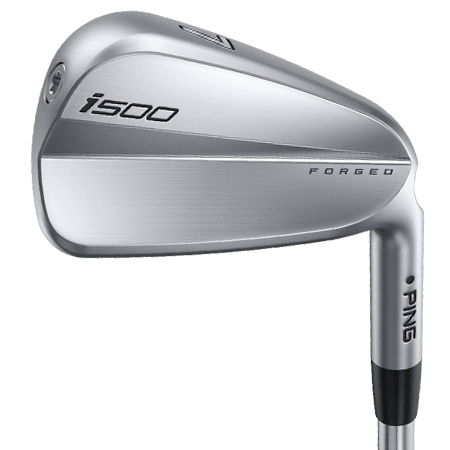 | PING i500 Check Price | 44.25° | 35.5" | 29.75° | 37" | 23.5° | 38.25" |
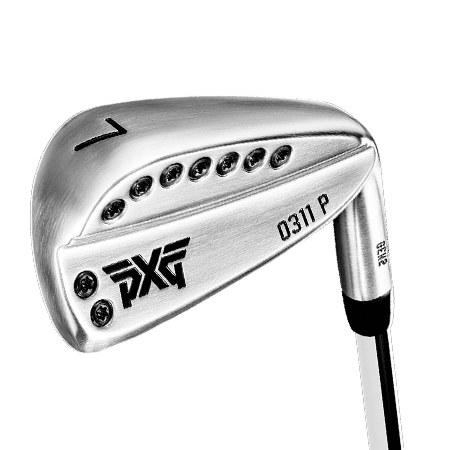 | PXG 0311 P Gen 2 Check Price | 45° | 35.5" | 30.5° | 36.875" | 23.75° | 38" |
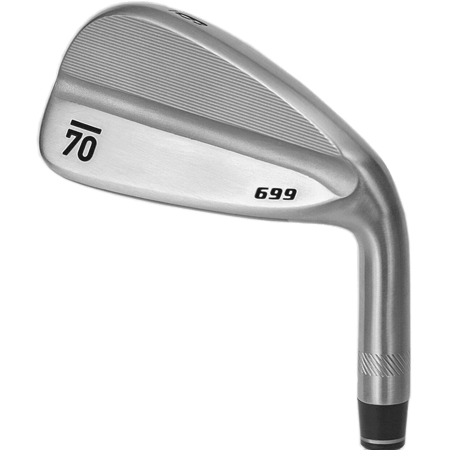 | Sub70 699 Check Price | 44.25° | 35.5" | 29.75° | 36.875" | 21.5° | 37.875" |
 | TaylorMade P790 Check Price | 44.25° | 35.5" | 30° | 36.75" | 23.75° | 37.875" |
 | Titleist AP3 Check Price | 42.5° | 35.625" | 31.25° | 36.75" | 25.25° | 37.875" |
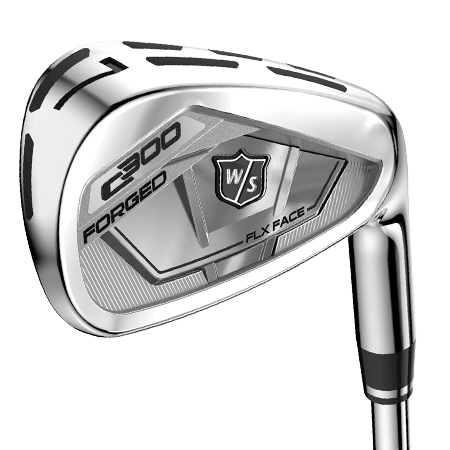 | Wilson Staff C300 Forged Check Price | 43.5° | 35.375" | 32.5° | 37.125" | 26.25° | 37.875" |
* denotes measured value vs. manufacturer’s stated spec.
FAQ
BUYING NEW IRONS
Q: How often should I buy new irons?
A: While on rare occasions there are quantifiable year-over-year breakthroughs, typically it takes 3-5 years for manufacturers to make any significant performance gains. With the USGA further tightening restrictions on manufacturers, it’s possible, even likely, that it will take longer still moving forward. Our recommendation is to buy new irons only when they appreciably outperform what is already in your bag. Of course, if you want new irons because you want new irons, that’s fine too.
Q: How do I determine the right category of irons for me?
A: The four categories of irons we test are: players (cavitybacks), players distance, game improvement, and super game improvement. While there is some overlap between categories, your search should begin with an honest assessment of your skill level (handicap), as well as what you need in your game. If your handicap is above 10 and ball-striking is not a legitimate strength, consider game improvement or super game improvement. For more skilled players who hit the ball more consistently, a set of players irons or players distance irons may benefit your game the most. For those on the bubble, especially for those seeking a few more yards, the Players Distance category could be ideal.
Q: Does the shaft matter?
A: Absolutely. While changes to spin and launch differences are rarely massive, shaft changes frequently lead to improved accuracy, tighter dispersion, and greater overall consistency.
Q: What should I look for when testing irons?
A: While golfers have been conditioned to consider distance to the exclusion of nearly everything else, even within the Players Distance category, we recommended looking at the little numbers and looking for small circles. When comparing metrics like distance and ball speed, be sure to look at your standard deviations (the small numbers usually found under the big ones on the data screen). Smaller numbers mean better consistency, which will usually mean more than an extra yard or two on the golf course. Similarly, look for tighter dispersion ellipses (small circles). We can’t overstate the importance of consistency with irons.
Bucking the Loft-Jacking Trend?
Every year, golf companies promise more yards, and sometimes they deliver. But at what cost? One of the easiest (and frequently employed) methods to increase distance is to decrease loft; essentially turning yesterday's 6-iron into today's 7-iron. While we all understand that accuracy and consistency are the most essential elements of competent iron play, almost inexplicably, distance is still what moves the needle in the iron category.
Players irons typically buck the trend. While it's perhaps not entirely accurate to say manufacturers use traditional lofts, irons within the category are among the weakest lofted (relative to the number stamped on the sole) on the market. While distance is always important to some degree, golfers of elite skill benefit from higher spinning shots that offer the stopping power necessary to attack pins on the small shelves. That being said, consistency always matter. You won't likely hit players irons as far as a game-improvement iron; but if you have the skill to flight your irons to whatever degree the shot calls for, the category is likely right for you.
MOST WANTED
Q: How are the irons in the test fit to each golfer?
A: We use a fitting process that we call fit from stock. Irons are fitted to each tester using the stock, no up-charge options from each manufacturer. We test one short iron, one mid-iron, and one long iron from each set. While there are no irons in our testing that feature adjustability, we fit to flex for each tester in the pool. Occasionally manufacturers will send multiple sets with different stock shafts that we can utilize to improve launch conditions.
Q: How do you determine in which category to test a given set of irons?
A: To ensure that we’re testing irons as alike as designers allow for, in addition to the design of the head itself (profile, sole width, etc.), we sort by length and loft. Our goal is to keep differences as minimal as possible within any test cohort. When an iron reasonably fits in more than one category, we defer to the manufacturer’s category choice.
Q: How is the Most Wanted Game Improvement Iron Determined
A: To determine our rankings, we collect key performance metrics with Foresight GCQuad Launch Monitors. After eliminating outliers, we use a utilize a proprietary methodology to calculate Strokes Gained values for each combination of tester and golf club. Next, we calculate confidence intervals and determine the statistical reliability of our Strokes Gained values. The iron that is reliably better for the highest percentage of testers is the Most Wanted. For more detailed information on our test process, visit our How We Test Page.
Q: How is the “Longest” Iron determined?
A: The process to determine the Longest Players Distance Iron is similar to how we arrive at our overall rankings. For distance, our critical metric is Total Yards. We identify the iron that is most reliably among the longest at middle and long iron lengths for the highest percentage of our testing pool.
Q: How is the “Most Forgiving” Iron determined?
A: To determine the Most Forgiving Game Improvement Iron, we focus on a narrower set of metrics that includes: Shot Area (dispersion, measured in yards2), and the standard deviations of several key metrics: ball speed, carry yards, pin proximity, and strokes gained.
Q: You discuss subjective feedback for things like looks, sound, and feel. How much do those ratings factor into your rankings?
A: ZERO. Our rankings are based purely on launch monitor data and quantifiable performance metrics.
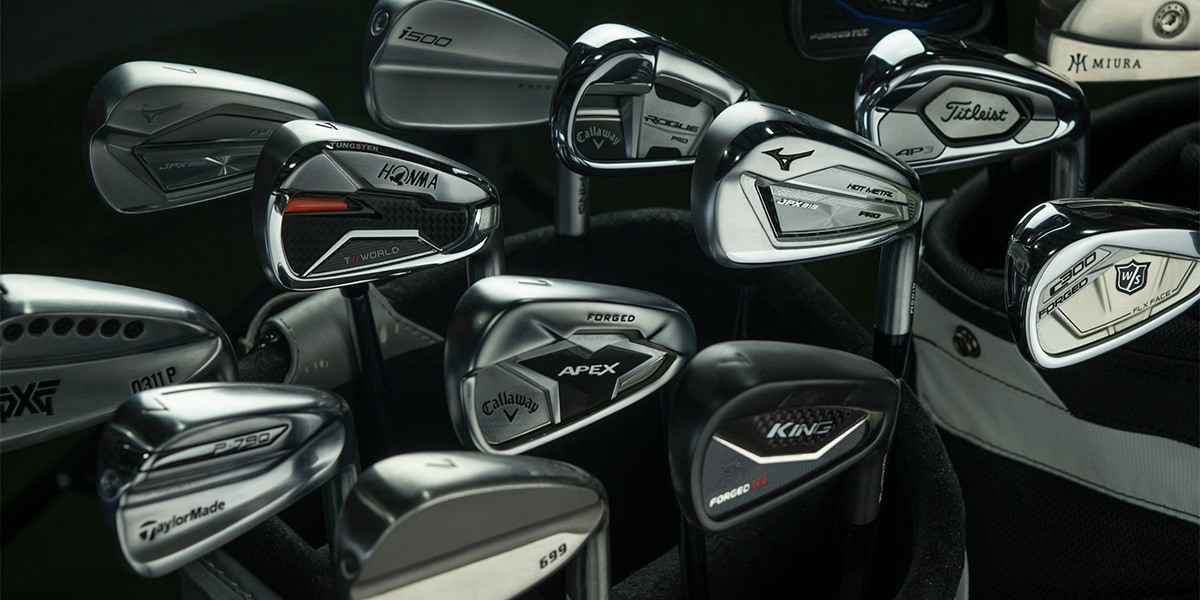

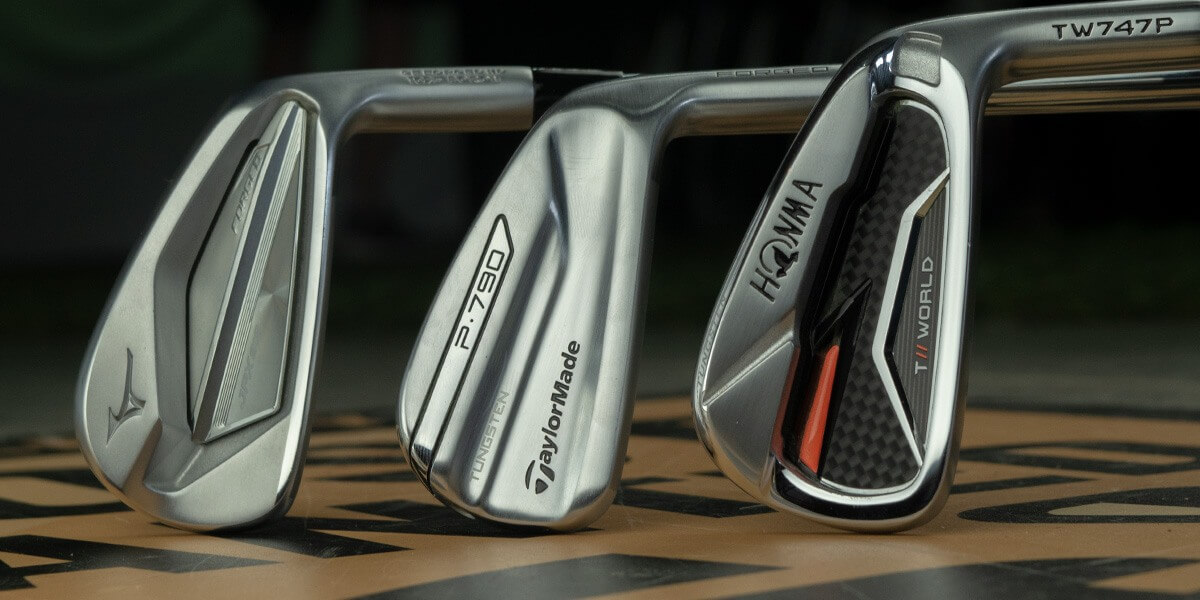
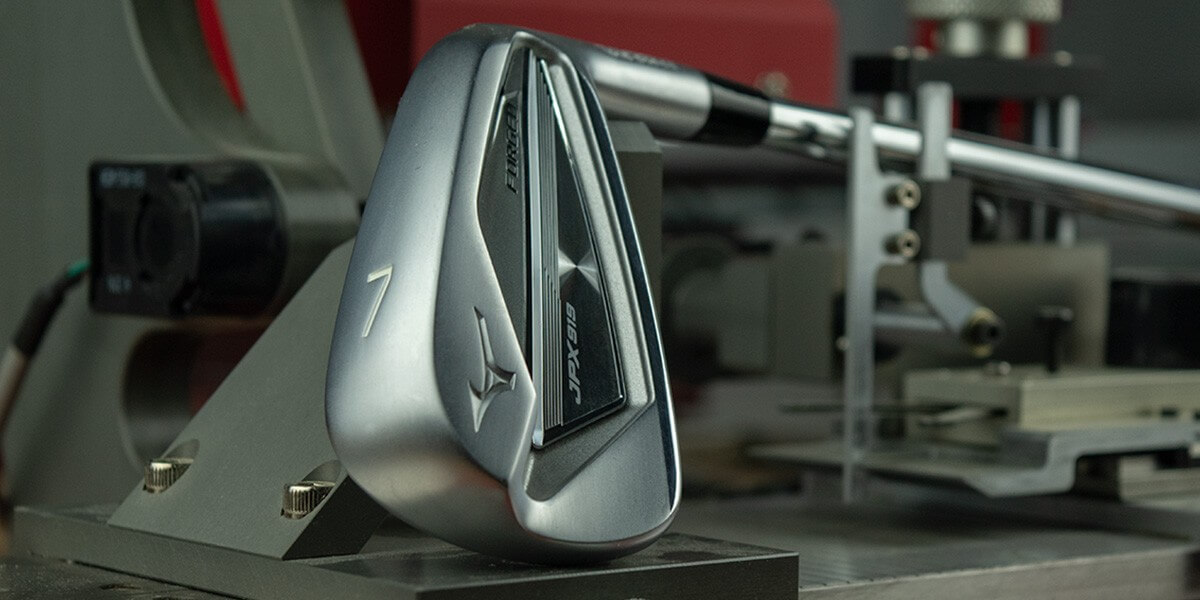
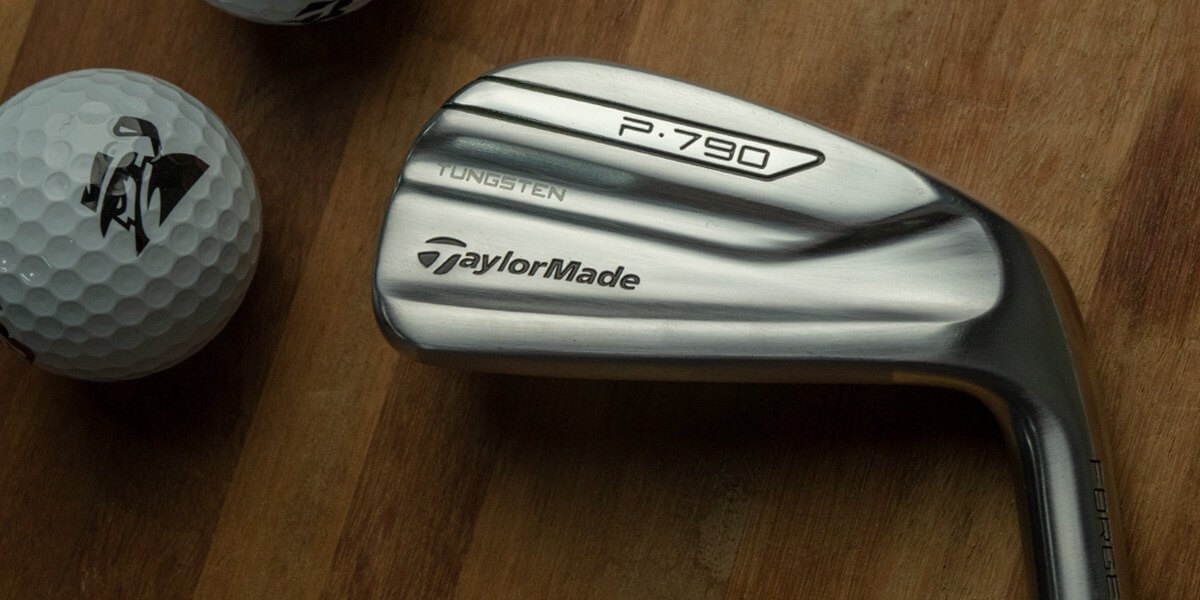


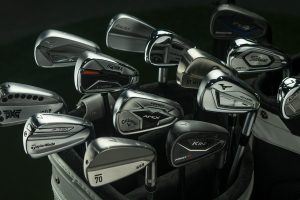





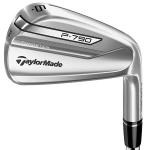













John Smith
4 years ago
Too many “in the weeds” comments. It is like listening to IT geeks argue about the speed of their server. This is the greatest body of unbiased research available to any potential consumer. You can argue about “rounding errors” on lofts, but you are in a small population that think numbers alone drive the discussion and subjective measures such as feel, looks ( ie top line width) have no impact.. This game has always been part science, part FEEL./confidence. If you like the way a club looks and feels, and it delivers rational distance and decent angle and dispersion numbers, you will max your potential. This review INCLUDES subjective measures and that adds value. Otherwise, put them all on IRON BYRON and and pick the longest. This review is very helpful to “narrow the field, point you to a head that may fit the profile you are looking for and focus a fitting where shaft selections will make a huge difference in specific results. I think this survey is a super starting point and provides significant value for the consumer. This is ALWAYS step one in the club selection process for me.